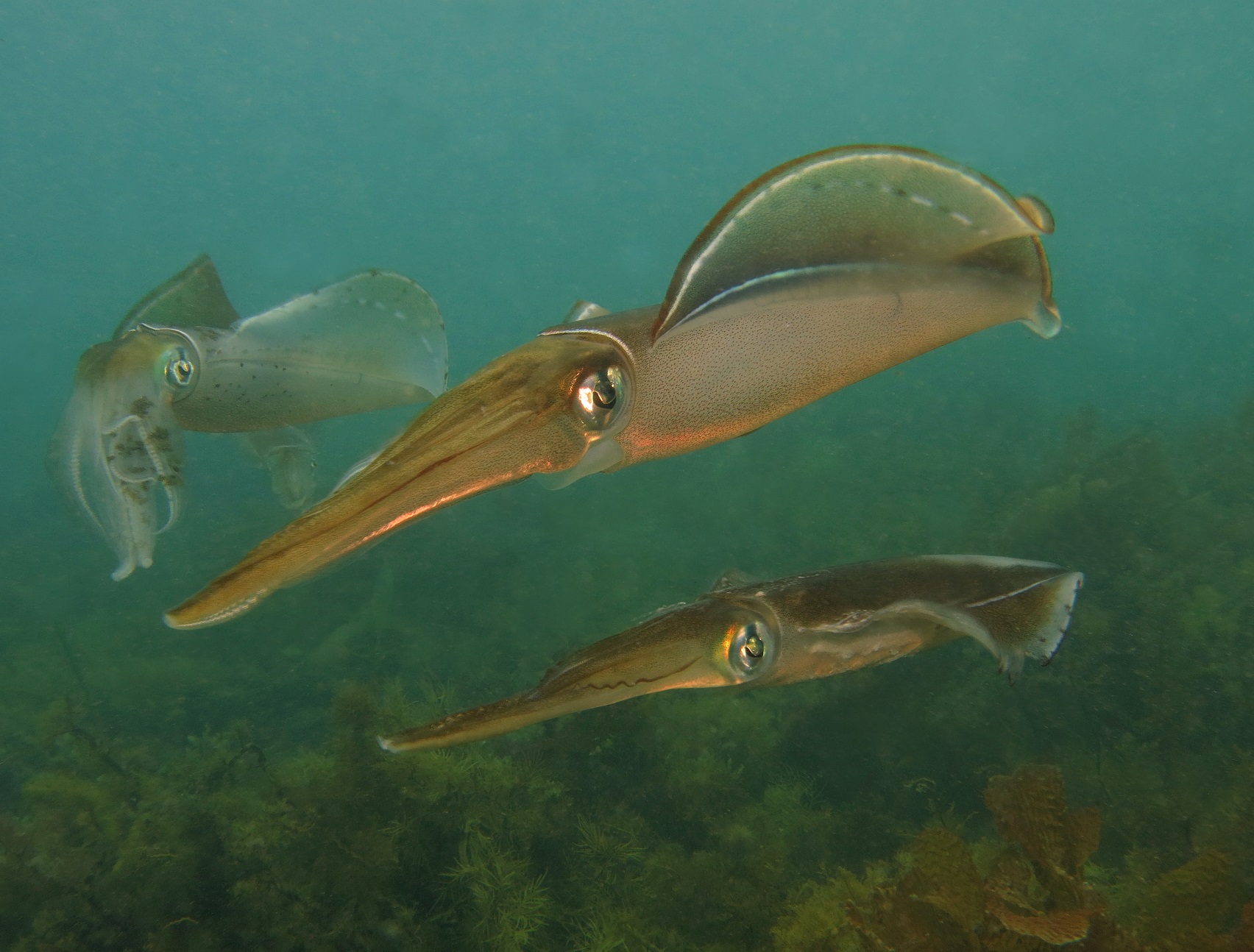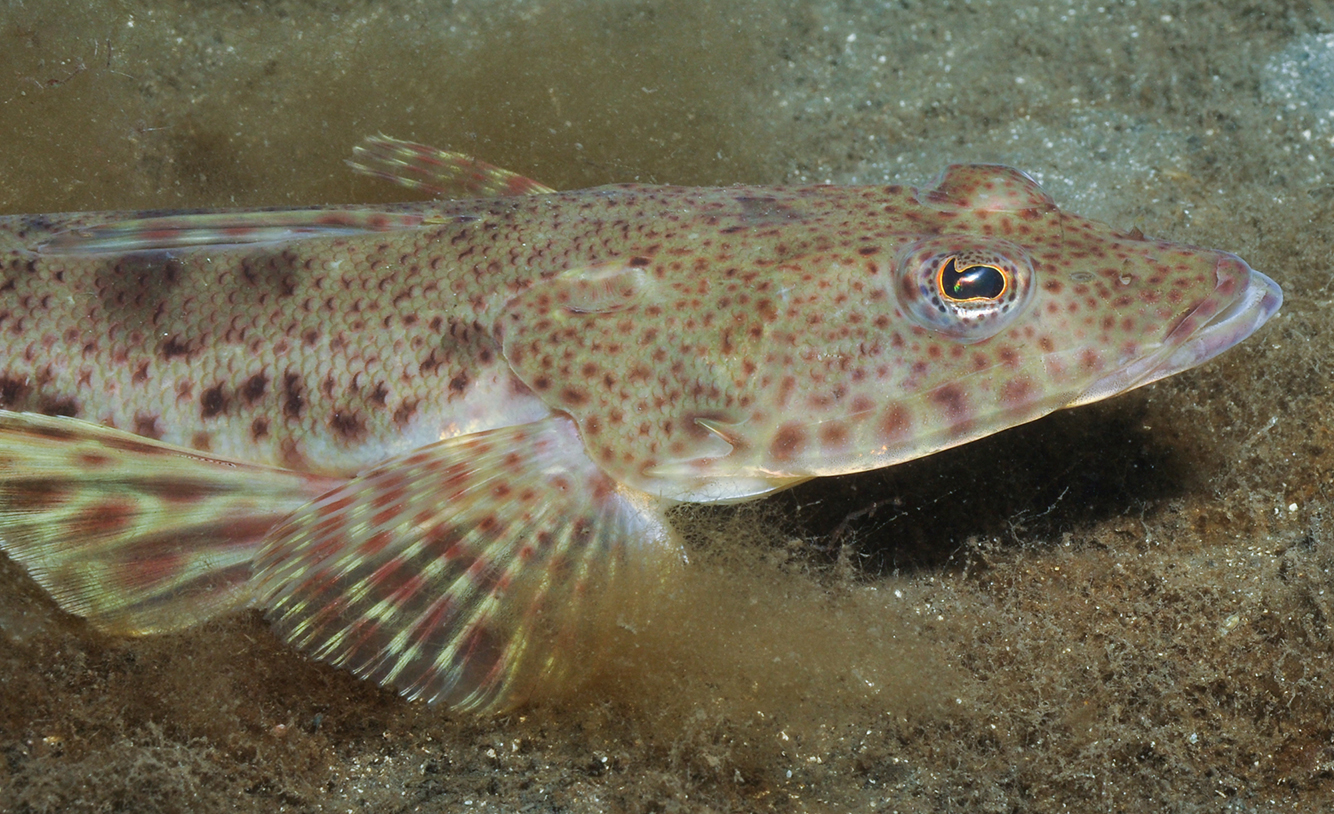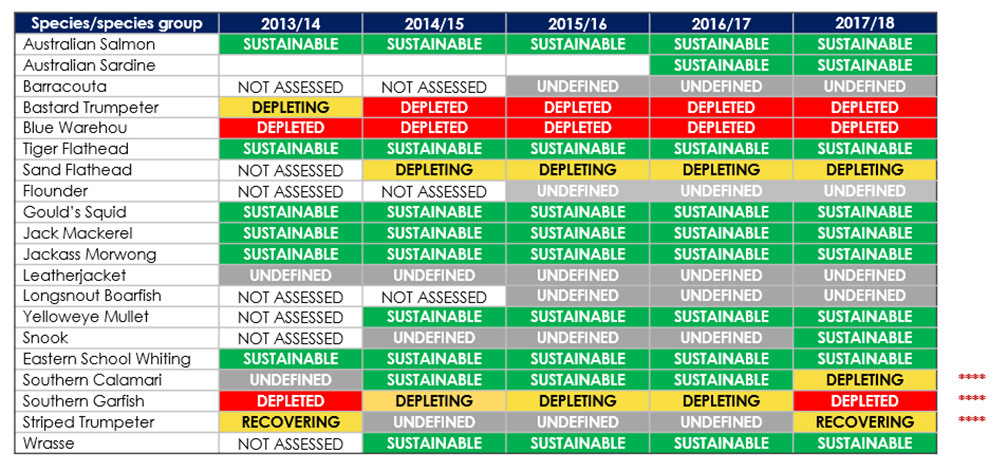
IMAS has released the 2017/18 Tasmanian Scalefish Fishery Assessment, which uses available fishery and biological information to determine whether each species is recruitment overfished or not.
The Tasmanian Scalefish Fishery is quite diverse, with fishers changing their operations in response to fish availability, market requirements and emerging opportunities. Only a small part of the total fleet specialises in a single activity or targets a particular species.
Operating in state waters, this multi-gear and multi-species fishery uses gillnets, hooks, seine nets and other gear to harvest a range of scalefish, shark and cephalopod species.
Since the early 1990s, commercial catches for many of the major species have declined, with total scalefish production, excluding small pelagics and cephalopods, falling by around 70% since the mid-1990s. Set against these declines, the recreational catch has become a significant component of the total harvest for species such as Sand Flathead, Striped Trumpeter, Bastard Trumpeter, Blue Warehou, Flounder, Mullet, Barracouta, Jackass Morwong, Cod and Leatherjacket.
For the 2017/18 season, 16 of the 19 species assessed remain unchanged. However, the status of three species has shifted since last season’s assessment, including Striped Trumpeter, Southern Calamari and Southern Garfish.
 Striped Trumpeter is now classified as recovering, following signs of recovery over the last two years and evidence of recent recruitment. This comes after a lack of recruitment for over a decade and limited biological information available to assess stock status in recent years.
Striped Trumpeter is now classified as recovering, following signs of recovery over the last two years and evidence of recent recruitment. This comes after a lack of recruitment for over a decade and limited biological information available to assess stock status in recent years.
Southern Calamari (left) has moved from sustainable to depleting, with recent high catches and effort (particularly off the north coast) increasing the risk that fishing will reduce future recruitment. (Photo: Antonia Cooper)
Southern Garfish has moved from depleting to depleted, and even though management actions were taken to reduce catches over the last five fishing seasons, current low levels of fishing pressure may still be too high to allow stock to recover.
For other species classified as depleted, such as Bastard Trumpeter (above right), fishing pressure may also be too high to allow stock recovery. (Photo: Rick Stuart-Smith, Reef Life Survey)
 Sand Flathead (right) are of special interest due to their importance to the recreational fishery, with recreational catch more than 20 times greater than the commercial catch. Fishing pressure on this species remains very high, especially in the south-east, with little evidence of stock improvement despite management changes that include a size-limit increase. As a result, this species remains classified as depleting. (Photo: Rick Stuart-Smith, Reef Life Survey)
Sand Flathead (right) are of special interest due to their importance to the recreational fishery, with recreational catch more than 20 times greater than the commercial catch. Fishing pressure on this species remains very high, especially in the south-east, with little evidence of stock improvement despite management changes that include a size-limit increase. As a result, this species remains classified as depleting. (Photo: Rick Stuart-Smith, Reef Life Survey)
Meanwhile, the status of species such as Australian Salmon, Tiger Flathead, Gould’s Squid, Jack Mackerel, Jackass Morwong, Eastern School Whiting and Wrasse have remained sustainable for almost a decade.

Tasmanian scalefish assessments 2013/14 to 2017/18
Read the full scalefish assessment report here